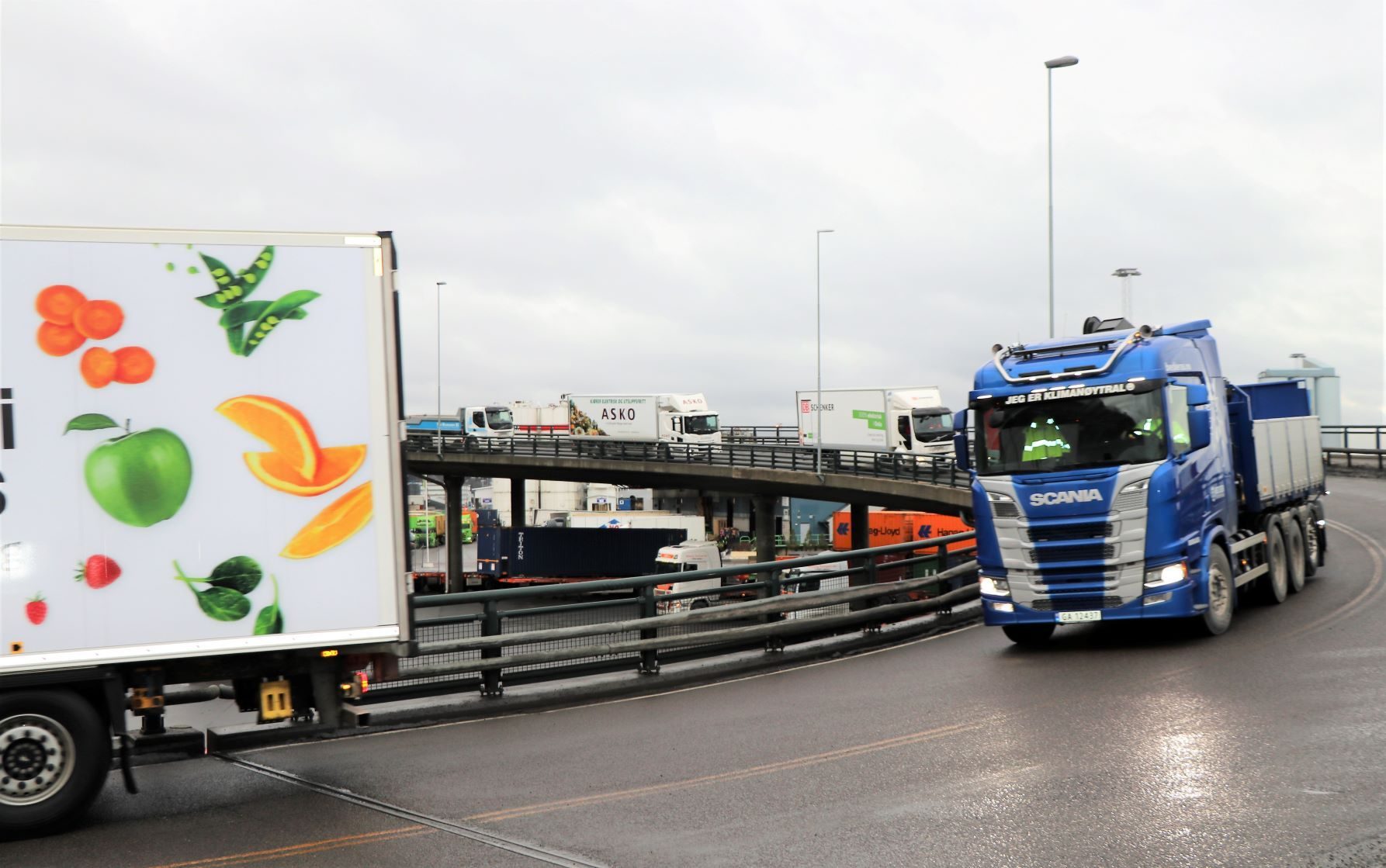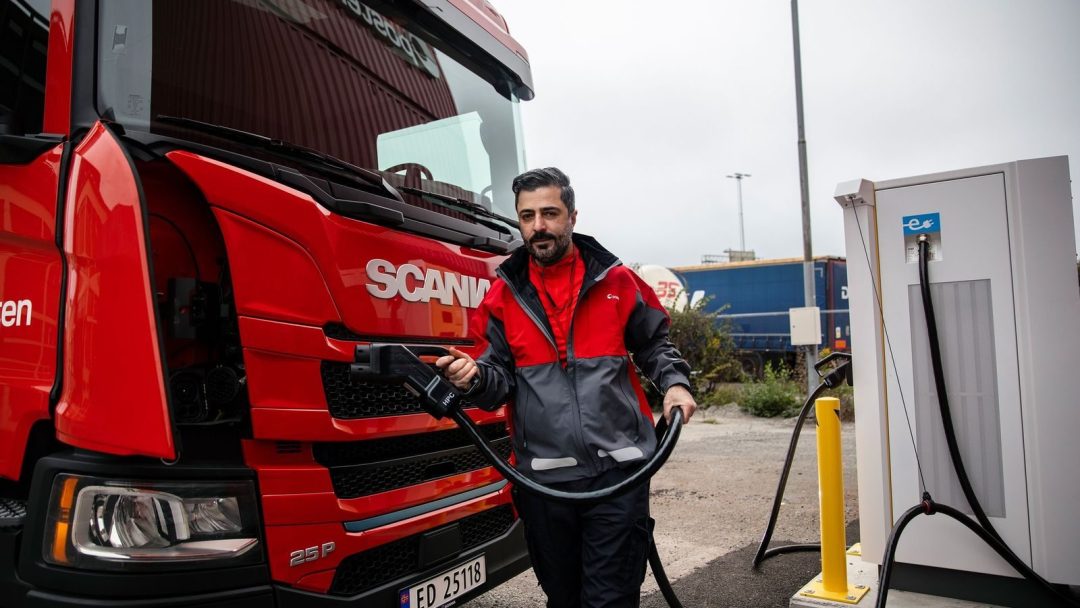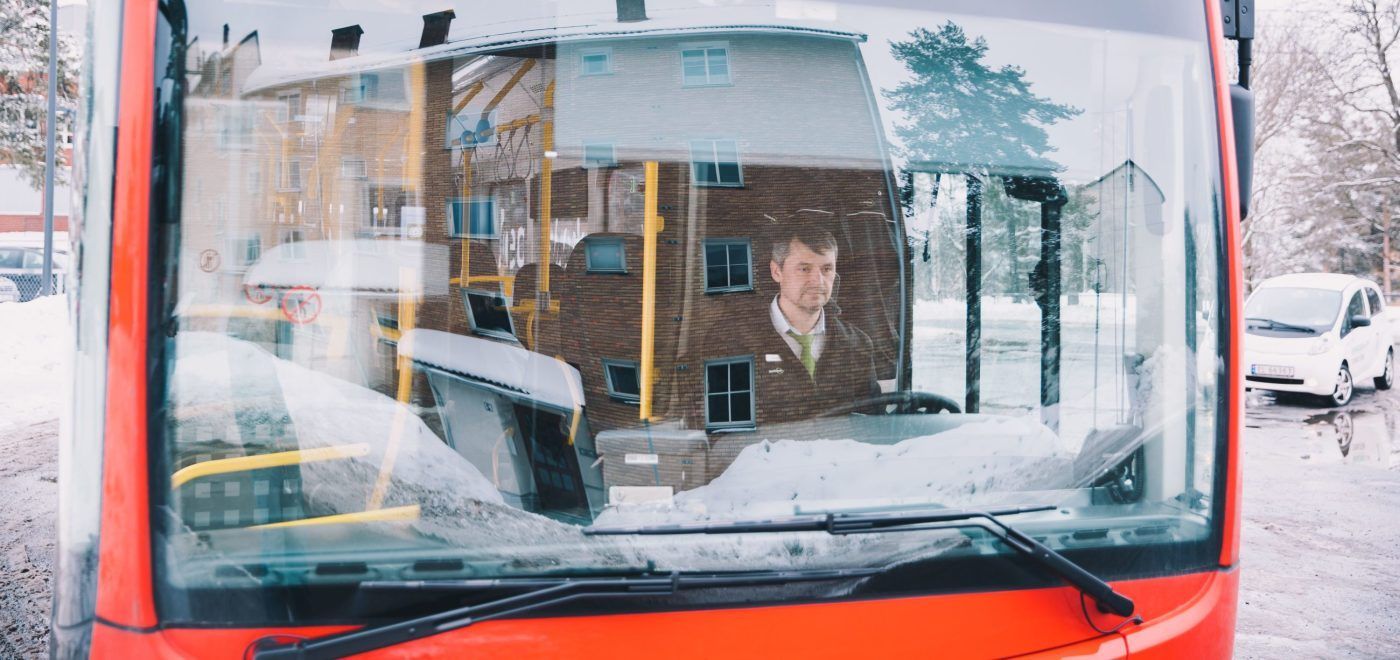Size: large
Type: image

Heavy-duty transport represents a fourth of emissions from road traffic and 13 percent of Oslo’s total emissions. Consequently, the City Council decided in 2020 that The City of Oslo, along with the transport sector, would make Oslo a frontrunner for heavy-duty transport. Since then, The City of Oslo has been working systematically with providing measures to begin a transition to heavy-duty transport powered by electricity, hydrogen and biogas. Among other things, we have guaranteed an exemption for zero emission heavy-duty vehicles and those powered by biogas until 2027 at the earliest, made demands of emission-free transport in all our procurements and granted financial support for infrastructure for charging and filling of biogas.
And the result? In 2020, the sale of new electric and biogas-powered trucks was at 5 percent. In October 2022, the share was 60 percent, a record high. Throughout the year, every fourth new truck over 16 tonnes in Oslo was emission-free.
– This shows that the transport sector in Oslo is now one of the best in the world at zero emission heavy-duty transport, and there is good reason to believe that the targeted work has contributed to this, Petter Christiansen, project manager for the front-runner project in the Agency for Climate, says.

Petter Christiansen
This is how Oslo has achieved it
In the summer of 2020, the Agency for Climate received a grant of 4.275 million NOK through Klimasats to start the project “Foregangsby for utslippsfri tungtransport” (Capital for emission-free heavy-duty transport). These grants have been instrumental in achieving the good results and are a great example of how Klimasats can trigger significant reductions in emissions in the municipalities. Therefore, it is consequential that Klimasats has remained in the state budget for 2023.
– In the past, there were few measures in place to reduce emissions from this sector. In order to find the right measures, actors from the entire value chain were gathered to share insight on barriers and opportunities, Margrethe Lunder, climate advisor in the Agency for Climate, explains.
In addition, the Agency for Climate worked for simultaneity in supply and demand for emission-free vehicles and fuels. Consequently, the first trucks also have somewhere to charge their batteries and fill their tanks with hydrogen and biogas. At the same time, the City of Oslo has analysed and implemented measures that facilitate the transition and awards actors that acquire trucks powered by electricity, hydrogen and biogas.

Margrethe Lunder
Specifically, what has been initiated?
Prioritisation in the toll ring
An exemption for heavy-duty vehicles running on biogas was adopted in Oslo on September 1st, 2022. At the same time, it was decided that all heavy-duty vehicles powered by electricity, hydrogen or biogas is to be exempt from the toll ring until 2027 at the earliest. This ensures the predictability requested by the transport industry.
Procurement
The City of Oslo will include a requirement of the exclusive usage of electric vehicles or vehicles fuelled by biogas in all their transport procurements starting in 2025. Today, the requirement is included if at least three actors can offer such vehicles. If not, the requirement is dropped, but climate impact is still considered as a selection criterion. The City of Oslo has focused on communicating and clearly conveying these climate requirements throughout the entire project period.
Read more: Extensive investment in zero-emission trucks
Developing charging, biogas and hydrogen infrastructure
Our surveys have shown that a lack of access to fast chargers catered towards heavy-duty vehicles is one of the greatest barriers to procuring electric trucks in Oslo. Therefore, The City of Oslo has taken initiative to develop more chargers along with filling stations for biogas and hydrogen for this segment in the time to come.
- In the summer of 2022, the first public fast chargers for heavy-duty vehicles were developed on Filipstad in Oslo on the order of The City of Oslo. This is the first of several fast charging stations to be developed through allocations in the municipal budget
- In early 2023, a larger charging station for heavy-duty vehicles will be developed on Grønlikaia.
- A filling station containing hydrogen for heavy-duty vehicles and taxis is being constructed at Kjelsrud in Oslo. It was opened in the summer of 2022 as a temporary service for light vehicles. In the future, charging for heavy-duty vehicles will also be developed on the station. The Agency for Climate has contributed with legal assessments in the process of ensuring swifter processing of building applications in the municipality.
- An energy station with biogas and fast charging is to be developed at Ryen in Oslo in early 2023.

Vedat Yilmaz drives an electric truck for the Norwegian postal service and uses the new fast charger at Filipstad, Oslo. Photo: Christian Tunge.
Support schemes
- The City of Oslo has established a new grant scheme for large public charging hubs. Allocations of up to 15 million NOK per charging hub are being granted, and the grants cover up to 80 percent of the developing costs. 28 new fast chargers for heavy-duty vehicles are set to be developed close to arterial roads in the first selection period.
- The City of Oslo has developed a grant scheme for biogas filling stations in Oslo. The scheme is a consequence of the discontinuation of an equivalent Enova support scheme.
- The City of Oslo has also established a smaller grant scheme for charging trucks and buses. The scheme can be used by businesses to develop chargers on their own properties. Such a scheme has been highly requested by the transport industry.
Communication
Dialogue with businesses has been a key success factor in getting insight into barriers and to be able to design the proper means of action for a transition. We have also been working actively to ensure that our communication about the means of action and feedback from actors have reached the industry. This has been done through a campaign involving the web page fossilfrilastebil.no and advertisements and articles in industry media. Several meeting arenas have also been set up.
Read more: The Climate Budget – explained
